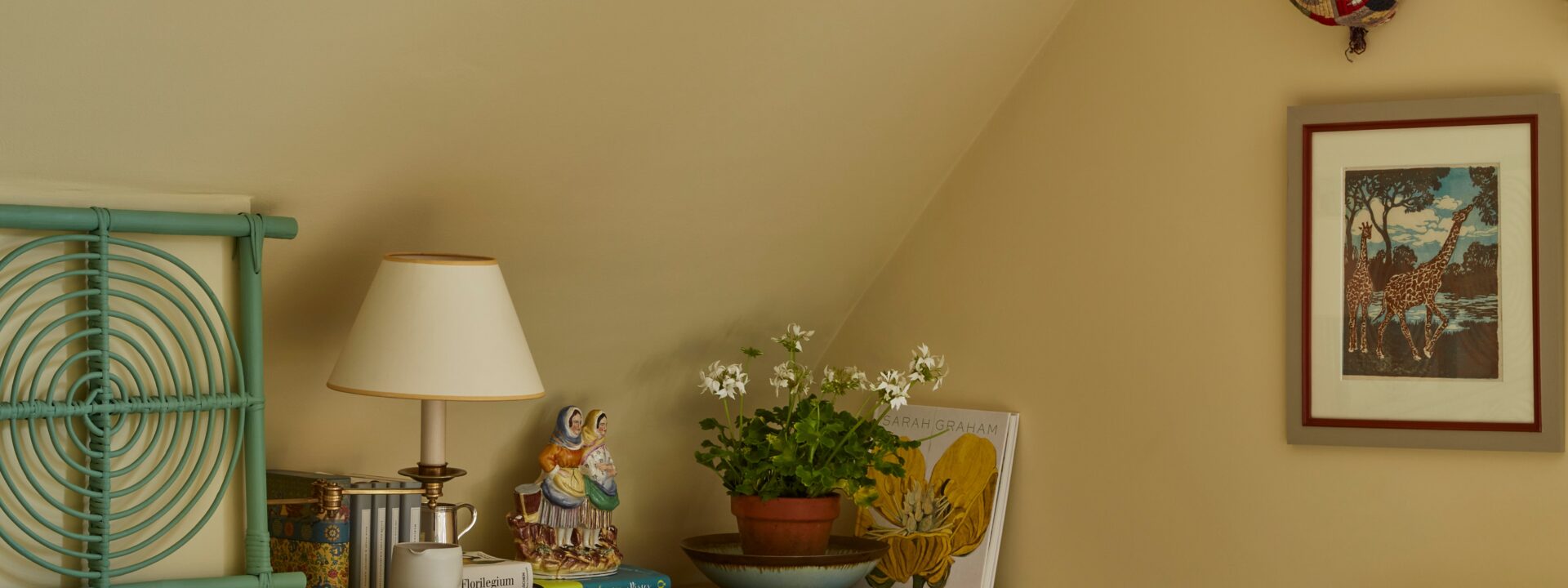Dark, dusty, and cluttered with forgotten belongings, the attic—that awkward space at the top of the house—was often overlooked. But thanks to social media inspiration and our growing desire to maximize home space, attics have quickly become a coveted spot for stylish interiors. In fact, global Google searches for “attic style room” have surged over 5,000% in the past month.
“Traditionally, attics were used for children or household staff,” says Chloe Willis of Sibyl Colefax & John Fowler. “With their sloped ceilings, skylights, and simpler details, they have a unique charm that sets them apart from the rest of the house—perfect for creative decorating.” Their cozy, cocoon-like feel invites embracing quirks like uneven ceilings or unusual shapes.
For designer Max Rollitt, a great attic is “treated with as much care as any other room—and it’s the perfect place to take design risks.”
Need ideas? Here’s how to transform your attic.
Plan the Layout
First, consider how to use the space. “Areas with lower ceilings work well for sitting or sleeping, while taller sections are ideal for storage or walkways,” advises Tiffany Duggan of Studio Duggan.
Wrap It in Color or Pattern
Plain white can make an attic feel dull. Instead, experts recommend covering walls and ceilings in bold paint or wallpaper. “This draws attention away from odd angles and ties the space together,” says Rollitt. Designer Holly Vaughn adds, “Embrace the ceiling—it adds instant coziness that’s hard to replicate elsewhere.”
For wallpaper lovers, an attic is the perfect testing ground. Take inspiration from Lucy Williams’s Instagram-famous attic, decked in Living Quarters’ Maidenhair wallpaper. “Don’t shy away from color or pattern,” says Willis. “Strong hues or prints turn a small space into a jewel box.” Smaller patterns often work best.
For the truly adventurous, consider Emma Burns’ tented attic design for Sibyl Colefax. “We transformed a charmless attic by draping black-and-white ticking fabric from a ceiling rail, topped with a crisp green valance,” she explains. The result? A dreamy guest room everyone wants to stay in. While it requires expert installation, it’s a stunning example of what’s possible.Maximize Your Space
Attic rooms often have plenty of eaves storage, so take full advantage. Duggan suggests using tongue-and-groove paneling with a hidden door for a clean, seamless look. Since standard wardrobes rarely fit attic dimensions, custom joinery is a smart solution—plus, it lets you experiment with unique designs. For other furniture, Vaughan prefers smaller, eye-catching pieces.
Cozy Alcove Beds
Remember building forts as a kid? Alcove or built-in beds bring that same sense of fun but with a more sophisticated touch. To create a snug retreat, Duggan recommends including a wall light, bookshelf, and well-chosen blinds, curtains, and valances.
Lighting Matters
Avoid harsh overhead lighting—Duggan favors wall lights and table lamps for a warm, inviting glow. Vaughan adds that soft lighting, along with quirky furniture and layered textures, helps turn the space into a peaceful escape.
Keep It Balanced
While it’s tempting to go all out, Rollitt advises restraint. “Bold design choices are great, but limit them to avoid overwhelming the space,” he says. A few striking elements will make more impact than a cluttered mix.
Images courtesy of Vaughan Design, Studio Duggan, and Sibyl Colefax & John Fowler.


